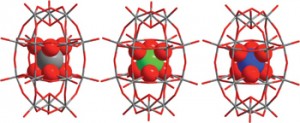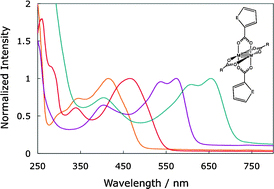 Polyoxometalates (POMs) are an outstanding family of compounds, well known for their huge structural diversity, interesting catalytic activities and rich electrochemistry. POMs are comprised of metal oxide building blocks with a general formula {MOx}n.
Polyoxometalates (POMs) are an outstanding family of compounds, well known for their huge structural diversity, interesting catalytic activities and rich electrochemistry. POMs are comprised of metal oxide building blocks with a general formula {MOx}n.
Lee Cronin and his team have a long association with the study of these exciting structures and in their recent Hot Article in Dalton Transactions this team takes a look at the rotational isomerism of the non-classical Wells–Dawson POMs. The group combine their theoretical investigation with ESI-MS to connect theory to experimental results. In doing so they determine the general stability trend of these types of POMs. Find out more by reading the article itself which is free to access until the 31st January 2012.
 Exploring the rotational isomerism in non-classical Wells–Dawson anions {W18X}: a combined theoretical and mass spectrometry study
Exploring the rotational isomerism in non-classical Wells–Dawson anions {W18X}: a combined theoretical and mass spectrometry study
Laia Vilà-Nadal, Scott G. Mitchell, De-Liang Long, Antonio Rodríguez-Fortea, Xavier López, Josep M. Poblet and Leroy Cronin
Dalton Trans., 2012, DOI: 10.1039/C2DT11919F












